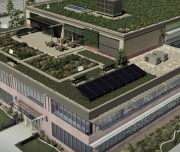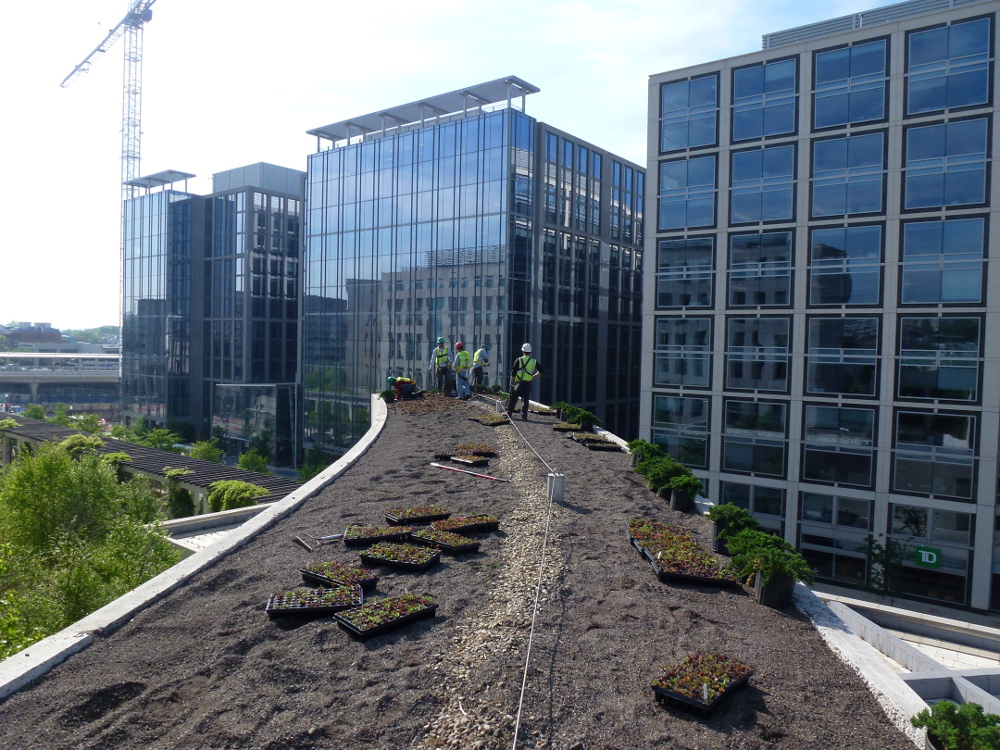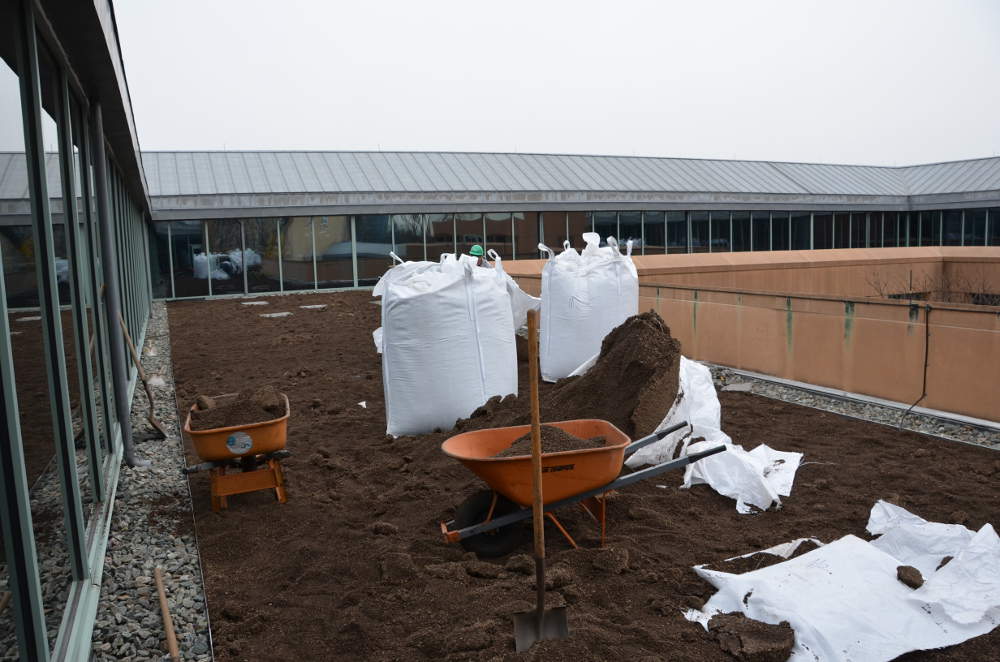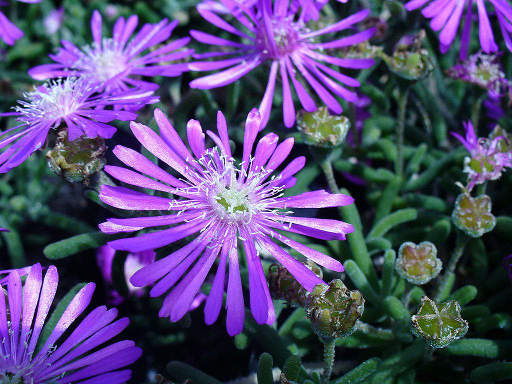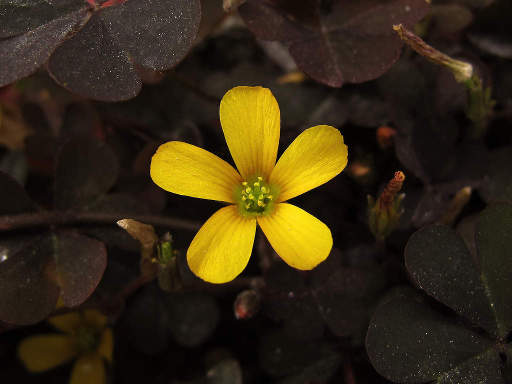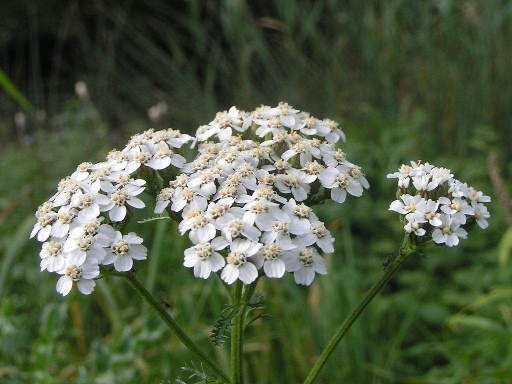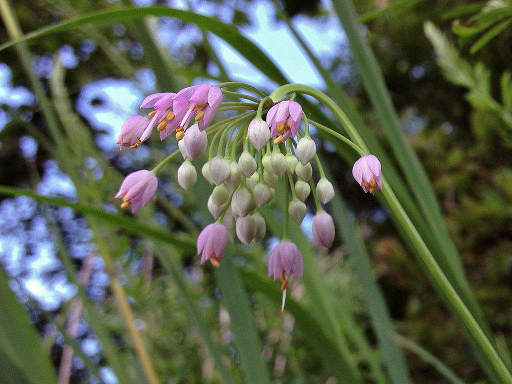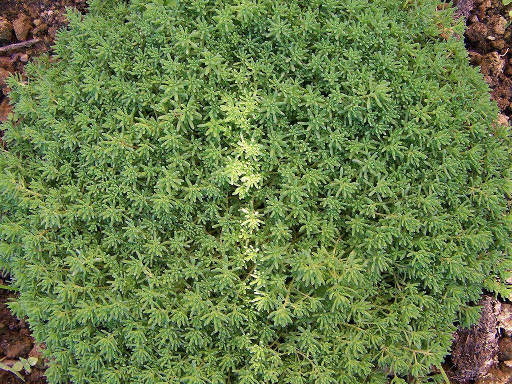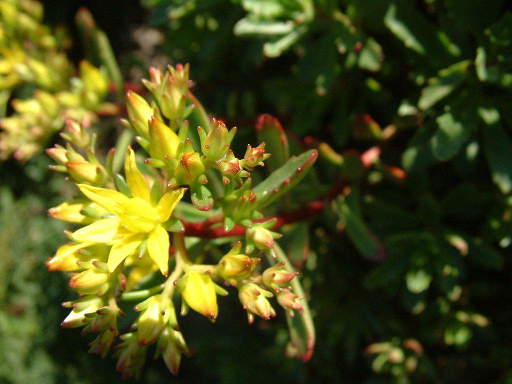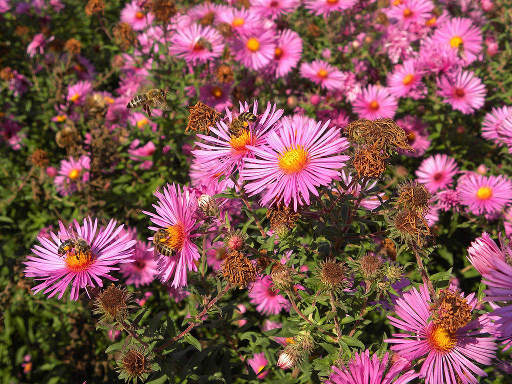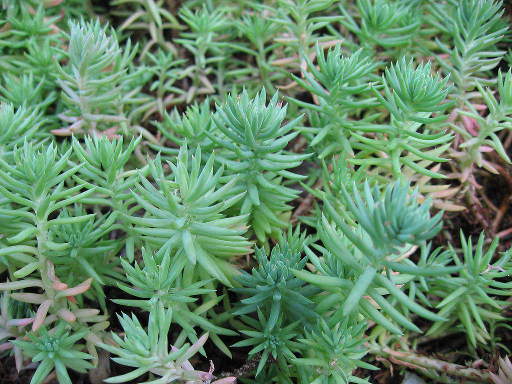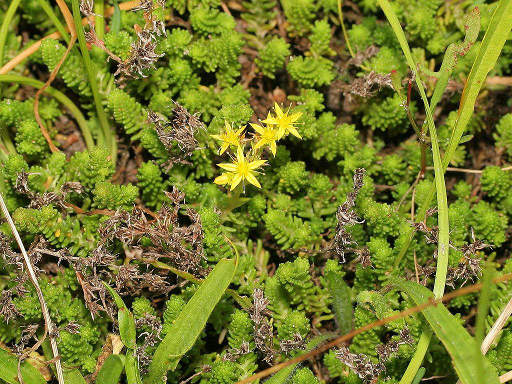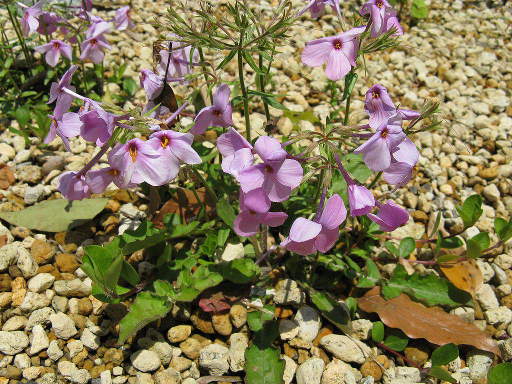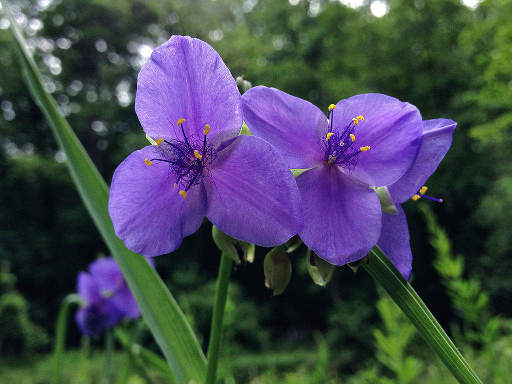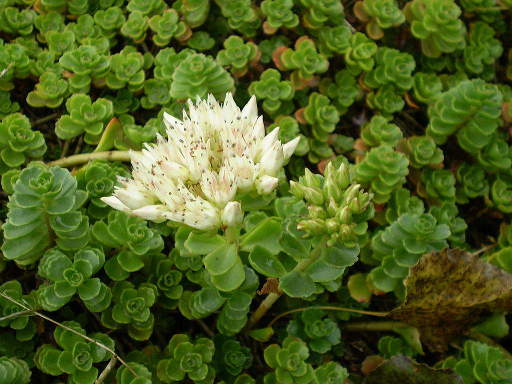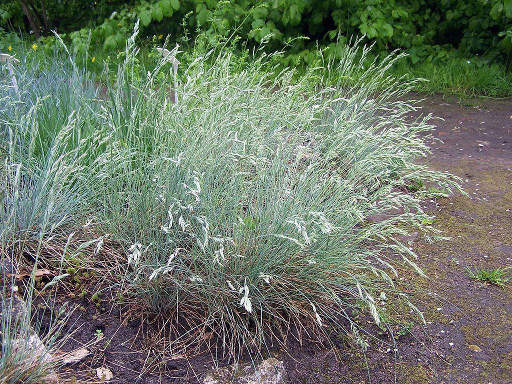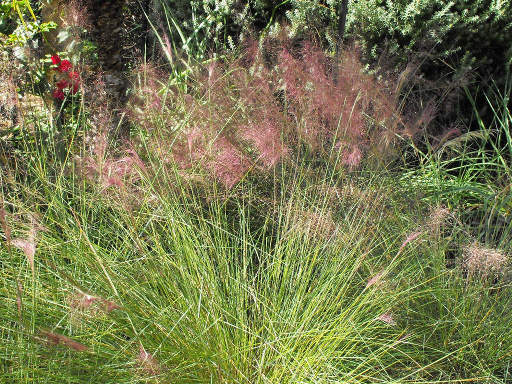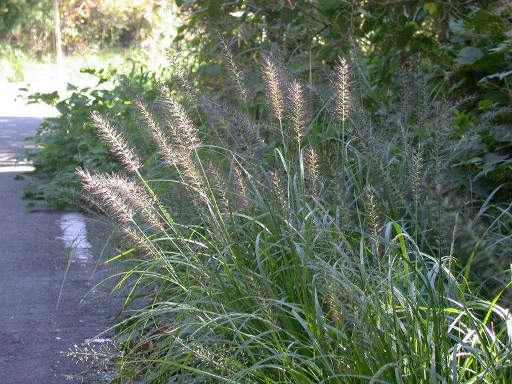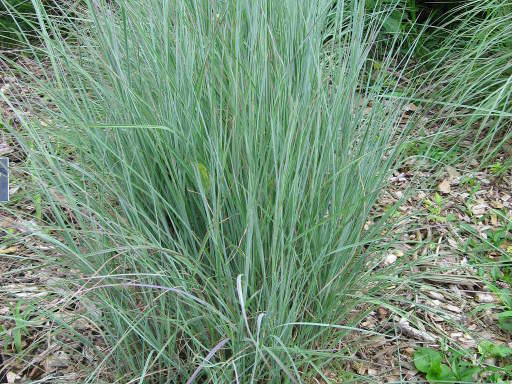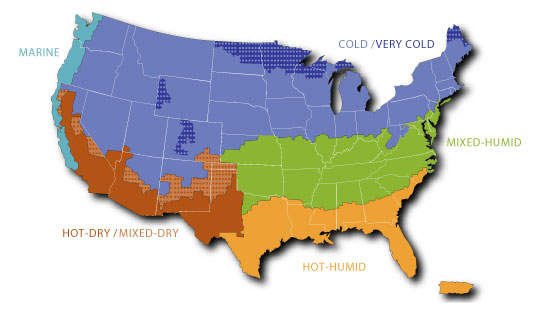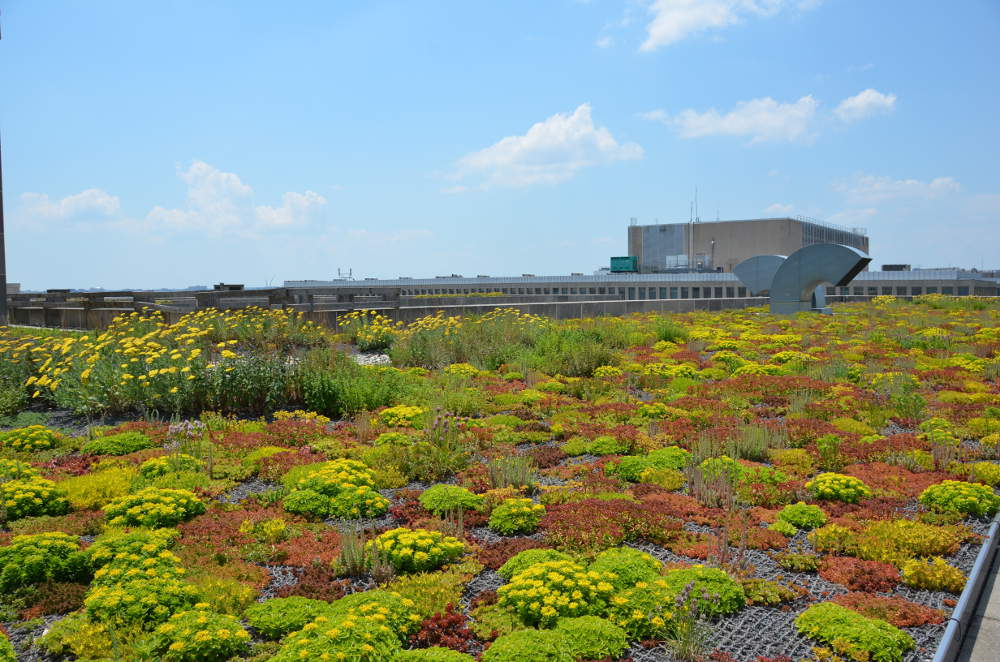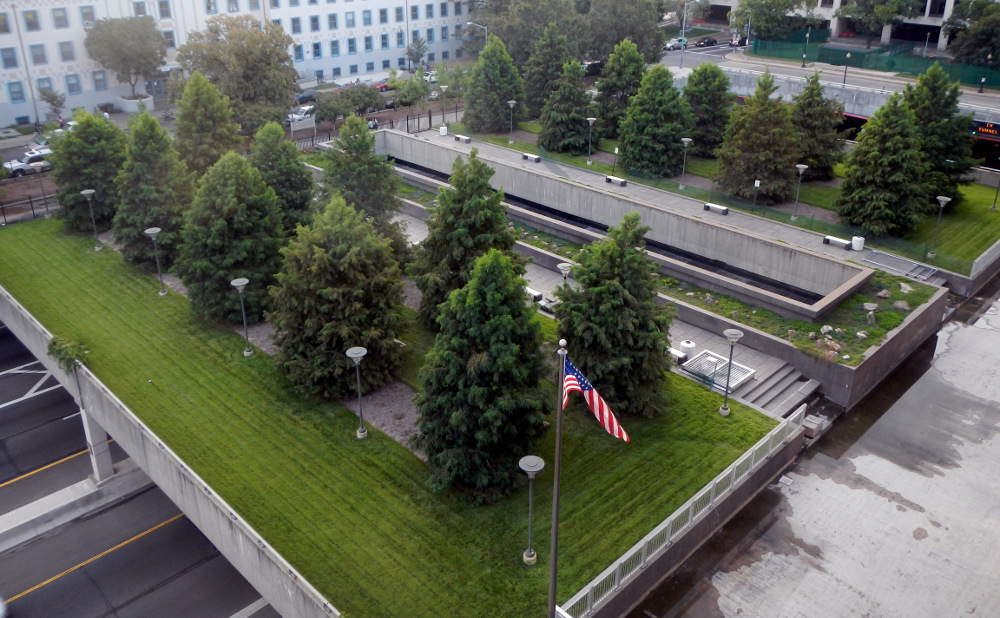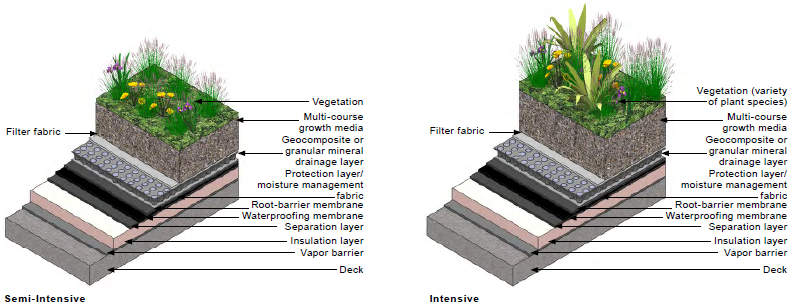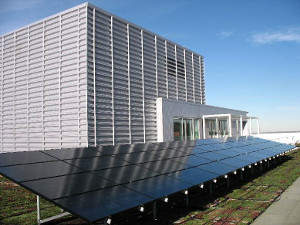System Overview
A “roof over our heads” is an essential part of a building envelope, protecting occupants and building structures and systems from the elements. While the value of a durable, leak-resistant roof is clear, traditional roofs can have many negative impacts, including contributing to the urban heat island effect and to stormwater runoff. Roof space, an often wasted resource, has the potential to:
- Help save or generate energy
- Slow stormwater runoff rates
- Bolster biodiversity
- Enhance building aesthetics and tenant amenities
There are an increasing number of options to take full advantage of the environment on top of your building, including planted roofs, cool roofs, and solar roofs.
Planted Roofs
Planted roofs - also known as vegetated roofs or eco-roofs - use plants as a technology to help bring the natural cooling, water-treatment and air filtration properties of vegetated landscapes to the urban environment. These systems consist of vegetation (plants), growing medium (soil) and a waterproofing membrane, overlying a traditional roof. There are two primary types of planted roofs: extensive and intensive. Extensive planted roofs consist of small succulent plants, while intensive planted roofs have greater plant diversity, including native vegetation, bushes, or trees.
Planted Roof Components
- Planted Roof
Benefits Summary
- Energy: Planted roofs reduce building energy use by cooling roofs and providing shading, thermal mass and insulation.
- Stormwater Management: Planted roofs can reduce the flow of stormwater from a roof by up to 65% and delay the flow rate by up to three hours, thus reducing pollutants being swept into water bodies.
- Biodiversity and Habitat: Planted roofs replace urban habitat for plants and animals, like birds and insects, thereby increasing biodiversity. Specific goals like increasing nesting and foraging for pollinator species like bees can be incorporated in a project (see the Presidential Memorandum on pollinators
 and the National Strategy to Promote the Health of Honey bees and Other Pollinators
and the National Strategy to Promote the Health of Honey bees and Other Pollinators ).
). - Urban Heat Islands: Cities are generally warmer than other areas, as concrete and asphalt absorb solar radiation, leading to increased energy consumption, heat-related illness and death, and air pollution. Planted roofs can help mitigate these effects. See A Temperature and Seasonal Energy Analysis of Green, White, and Black Roofs
 for more information.
for more information. - Roof Longevity: Planted roofs are expected to last twice as long as conventional roofs
- Aesthetics: Planted roofs can add beauty and value to buildings.
Installation
Materials/Layers
Waterproof Membrane
A waterproof membrane is designed to protect the building components from the weather, over which the vegetative roof system is installed. Membranes are required for all roofs types. For this reason, the membrane should be removed from any cost-analysis comparisons when determining between different types of roof to install.
GSA recommends that design teams at least utilize an inverted roofing membrane assembly (IRMA). See GSA's P100 Facilities Standards for more information.
Leak Detection System
Leak detection systems help identify problem areas where water surpasses the membrane and could cause roof damage if left unattended. The electronic leak detection method enables the detection and location of any leak, even pin-hole-sized defects, but requires the installation of a fine grid of metal wire within the planted roof and waterproofing layers. See Roof Leak Prevention for more information.
Drainage Layer
Planted roof drainage layers carry the excess stormwater runoff to the roof drains, and eventually off the roof. A properly designed planted roof will not have water sitting on top of it – any stored water will reside in the growing medium and vegetation.There are three main types of drainage layers used on planted roofs: simple geocomposite drain layers, reservoir sheets, and granular mineral medium.
- Granular medium is the best at slowing and delaying runoff.
- Reservoir sheets are designed to capture rainwater in indentations in their surface.
- Geocomposites, or multi-layered materials made from a combination of synthetic polymers, are adapted for planted roofs and designed to allow water to flow easily through the material, draining excess water away from a roof.
The type of drainage layer and the type of separation or moisture retention fabrics used in a roof will influence the roof’s performance.
Root-Resistant Layer
A membrane designed to provide protection to the underlying waterproofing membrane from root penetration and provide protection from microorganisms in the growth medium. Failure to use a root-barrier can cause structural damage to the waterproof membrane, and therefore can subsequently lead to demolition of the planted roof and the underlying waterproofing.
Growing Medium
Germany’s FLL Guidelines on planted roofs suggest the medium used on a planted roof generally retains from 30% to 60% of water by volume when totally saturated with water. The size of growth medium particles, the types of materials used and the depth of the medium all affect the amount of moisture the medium can retain.
- Size: Smaller particles have a higher surface area-to-mass ratio and smaller pores, both of which enhances the medium’s water retention capacity and capillarity, or its ability to absorb water through the capillary action that draws water into a particle.
- Type: As the proportion of organic matter in growth medium increases, so does its water retention capacity. However, too much organic material in a medium can cause it to shrink as the material decomposes. If the organic material contains high levels of nutrient salts, or various phosphorus and nitrogen compounds that have a fertilizing effect, it can even decrease the quality of runoff from the roof.
- Depth: The thicker the growth medium the more water the roof can absorb, at least up to a point. In general, a thicker roof can be expected to retain more water from an individual storm. A 4-inch roof can typically retain 1 to 1.5 inches of rain. This means that in the summer, when most storms produce less than 1 inch of precipitation, 90% of storms are largely retained. However, benefits do not depend exclusively on depth, and thinner extensive planted roofs yield the greatest benefit-to-cost ratio.
Vegetation
Vegetation should be chosen based planted roof type (i.e, extensive or intensive) and on the local climate.
Planted Roof Type: Intensive plnated roofs can include plantings with deep woody roots such as bushes and trees, while extensive planted roofs generally have plantings of low-growing, hardy sedums. Note that grass is generally not used on planted roofs.
Climate: Always give preference to native plant species when choosing vegetation. Sedums can also survive harsher environments of higher elevations and perform as a fire-break on the roof.
- Consider pattern variation instead of homogeneous plantings in order to support different habitats.
- Consider flowering plants to attract pollinators to your planted roof (see the Presidential Memorandum on pollinators
 and the National Strategy to Promote the Health of Honey Bees and Other Pollinators
and the National Strategy to Promote the Health of Honey Bees and Other Pollinators ).
).
See Extensive and Intensive Planted Roofs for more information.
| Potential Vegetation for Extensive and Semi-Intensive Planted Roofs1 | |||
|---|---|---|---|
| 3" Extensive | 6" Semi-Intensive | ||
| Succulents | Perennials Supplemented with Sedum | ||
| Delosperma cooperi | Potentilla verna | Achillea millefolium Cultivars | Allium cernuum |
| Sedum album | Sedum floriferum Cultivars | Aster novae-angliae | Echinacea purpurea Cultivars |
| Sedum reflexum (rupestre) Cultivars | Sedum sexangulare | Phlox pilosa | Tradescantia ohiensis |
| Sedum spurium Cultivars | Grasses Supplemented with Sedum | ||
| Festuca glauca Cultivars | Muhlenbergia capillaris | ||
| Pennisetum alopecuroides Cultivars | Schizachyrium scoparium Cultivars | ||
Roof Load
The dead load of a planted roof system is influenced by a number of factors, including contractor skill, medium components, and potential water retention. Variation from the design weight can result in structural failure.
The planted roof dead load is independent of other dead loads, such as snow load, included in the guiding building code.
Roof landscaping may change snow drift patterns, seismic loads, and ponding from rain accumulation; these changes may be in excess of typical or previous design allowances. Depending on the type of construction, the climate, and the proposed system, engineers should assess the likelihood that the introduction of a planted roof will have a material impact on other loading.
A plnated roof installation can be prematurely rejected for the belief that major structural designs must accompany every retrofit project.
The U.S. Department of Energy reported that most extensive planted roofs often do not require additional structural support: “The weight added by an extensive planted roof is comparable to that of the gravel ballast on a conventional roof— about 15 to 30 pounds per square foot, depending on the growing medium, the depth of the growing medium, and the weight and depth of any additional layers.”2
Consider planting less depth in “weaker” areas or only around columns which might be able to bear additional weight without structural upgrade.
Regional Differences
While the most ideal locations for planted roofs are warm and dry climates, a properly designed roof can thrive in other climates. Each potential project site must be evaluated by an engineer to better predict plant viability and energy performance. Designers can maximize the potential benefits of planted roofs by properly selecting plants, growth medium, drainage layers and other features tailored to the local climate and the building’s surroundings. For more arid climates, see Design Guidelines and Maintenance Manual for Green Roofs in the Semi-Arid and Arid West![]() .
.
Remember to consider regional variation in solar radiation when designing a planted roof. The amount of solar radiation can impact plant selection and the viability of installing photovoltaic panels.
High-Performance Tips and Strategies
| Examine the building’s particular micro-climates and orientation to the sun, as well as to other buildings. If there are urban canyons contributing to significant shading or there are high winds, some additional engineering may be required. | Simultaneous use of planted roofs and planted walls is significantly more effective than the use of planted roofs alone in reducing surface and ambient air temperatures in urban canyons and over rooftops. | Consider flowering plants to attract pollinators to your planted roof (see the Presidential Memorandum on pollinators |
| Make sure that the roof has proper structural integrity to support a planted roof. | Consider the amount of solar radiation as it relates to plant selection and photovoltaics. | Consider pattern variation instead of homogeneous plantings in order to support different habitats. |
| Use the Integrative Design Process page to identify the appropriate stakeholders. | Make sure that there will be little requirement for supplemental water following the initial plant establishment period. | Consider the mode of installation, such as delivery in bags via crane. |
1. The Benefits and Challenges of Green Roofs on Public and Commercial Buildings![]() 2. Living Architecture: Green Roofs on Public Buildings
2. Living Architecture: Green Roofs on Public Buildings![]()

